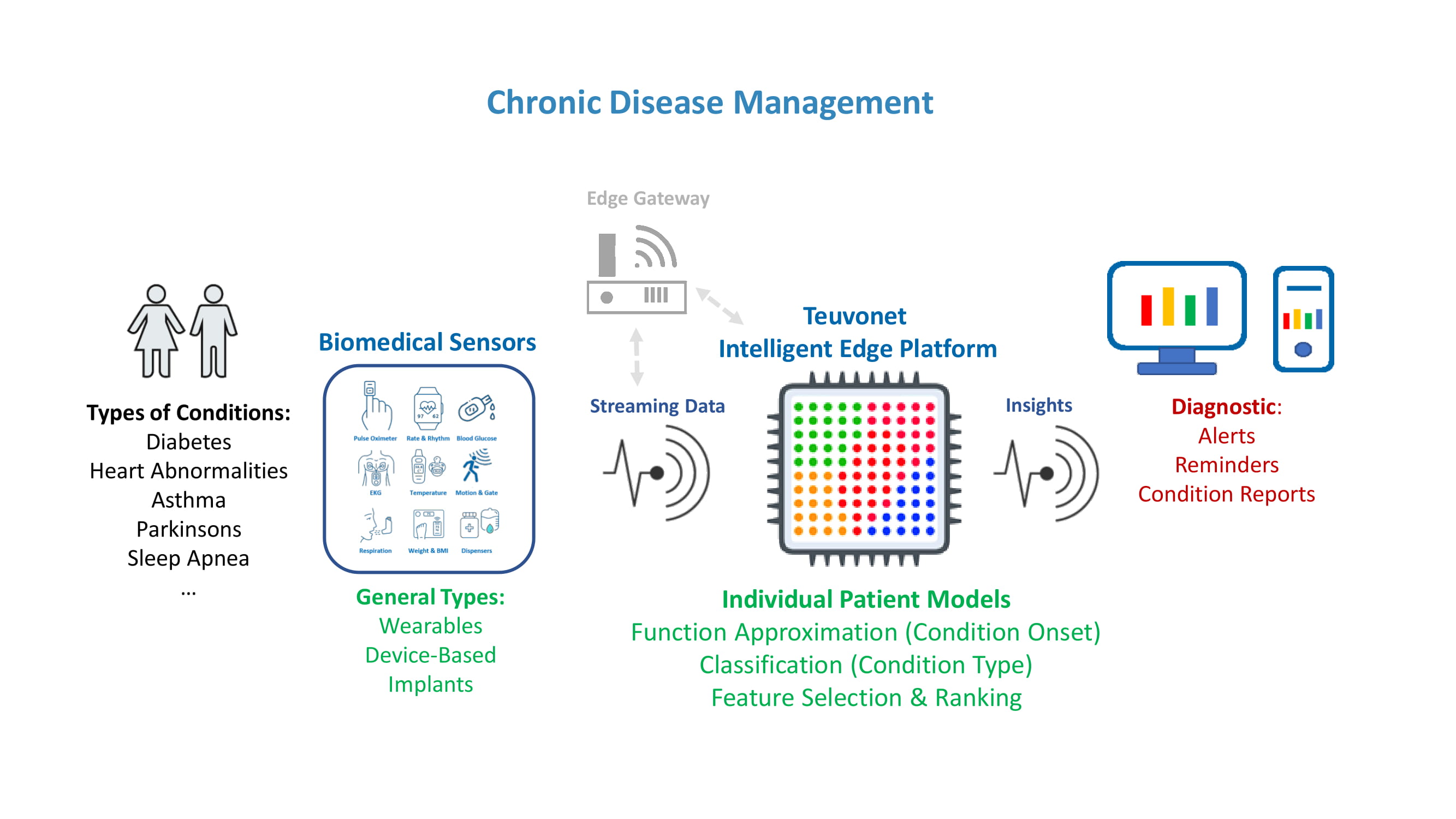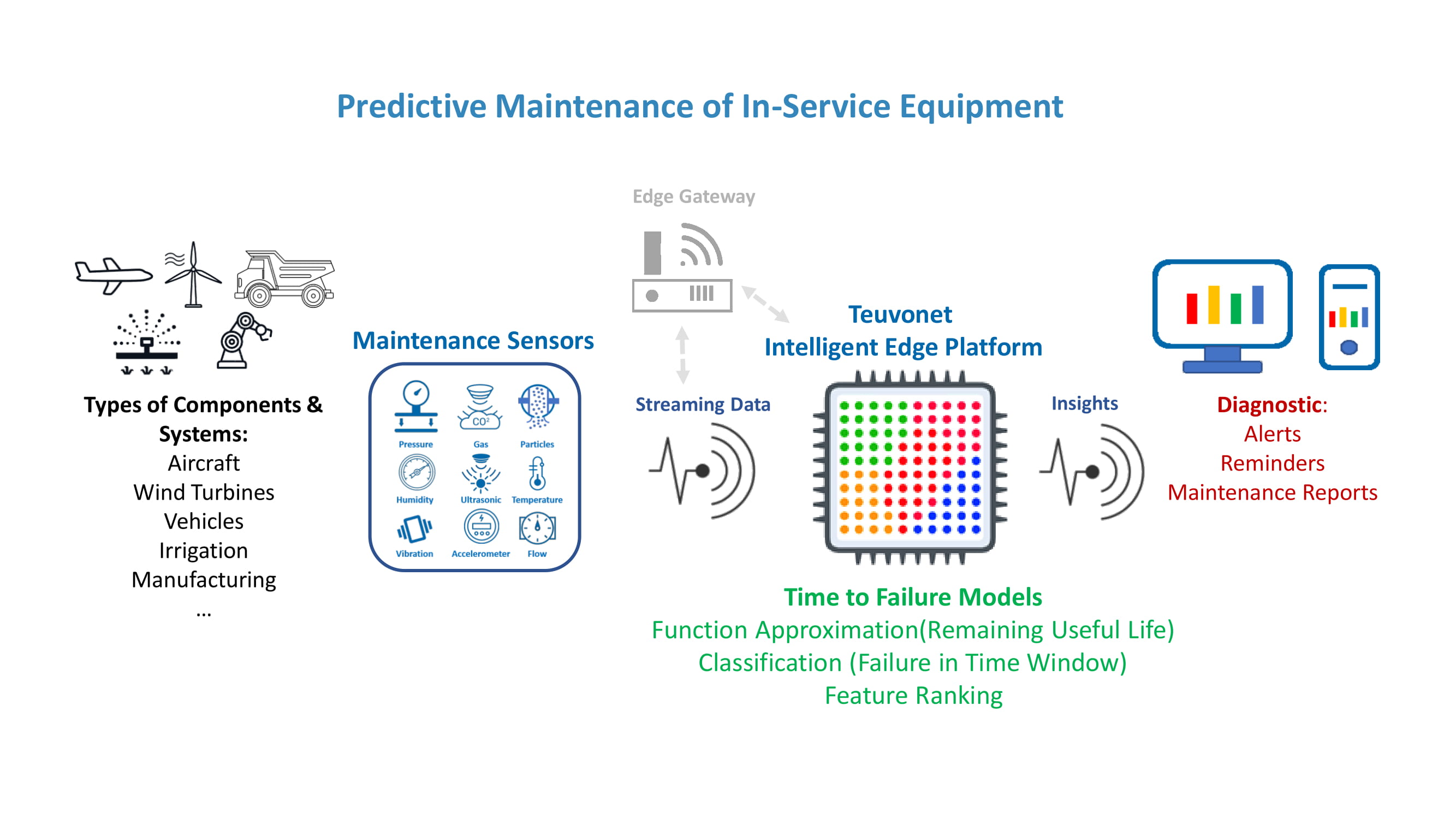Evolution
Today, the core of IoT processing transpires in the Cloud. In contrast, Teuvonet employs simplified, patent-pending capabilities running on GPU or FPGA Systems on a Chip (SoCs) to train, test, and execute machine learning models near the IoT/IIoT Edge in real-time.









